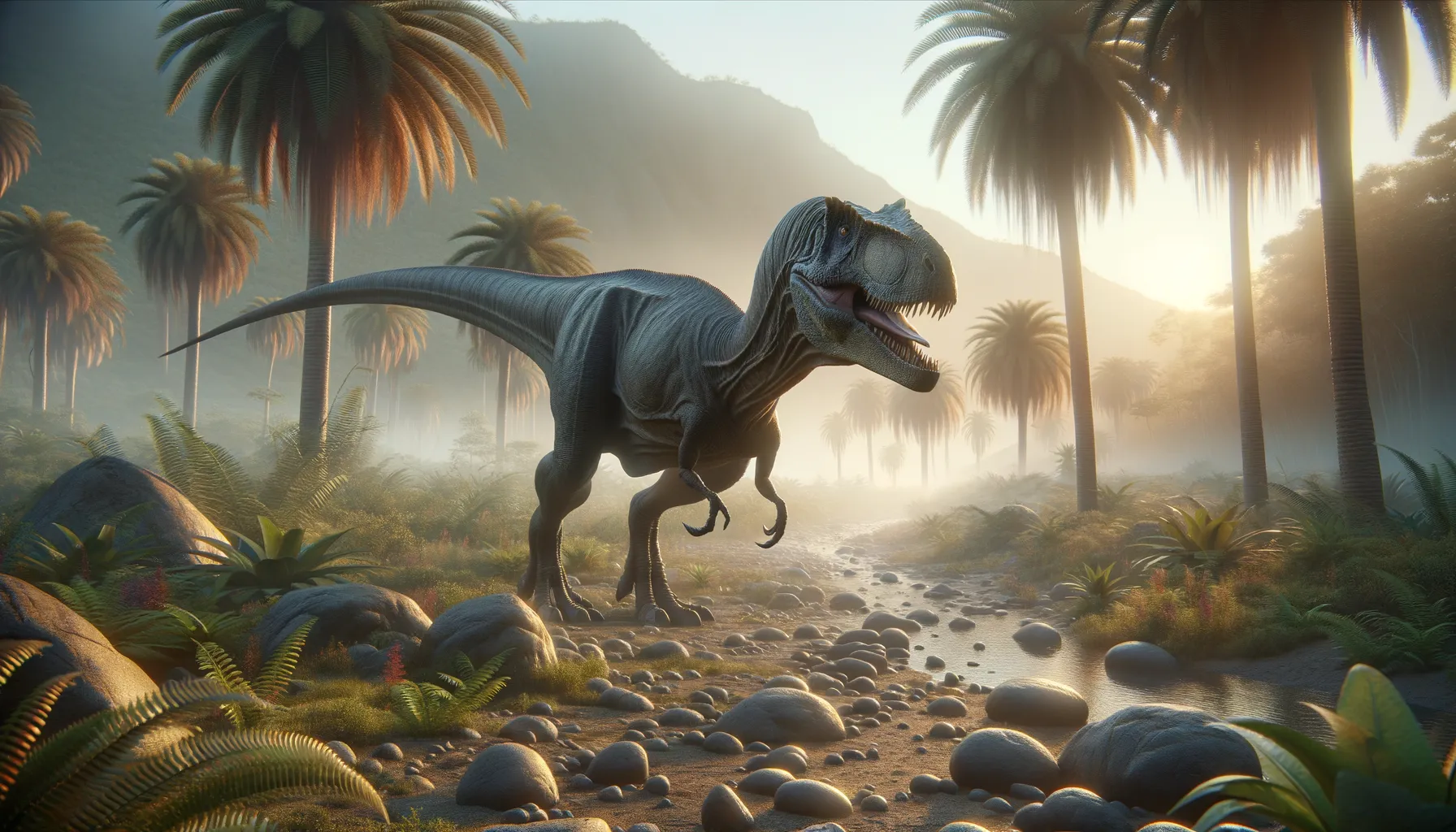
Rapator
Swift predator of the ancient Australian outback.
Period
Cretaceous
Length
Length estimated to be approximately 9 meters.
Height
Roughly 2 meters tall at the hip.
Weight
Estimated to weigh around 1 tonne.
Rapator was a theropod dinosaur that roamed Australia during the Cretaceous period. Its sleek build and relatively large size point towards a carnivorous lifestyle, likely preying on other dinosaurs. The discovery of its fossils has granted valuable insights into the diversity of Australian dinosaurs, although most of its skeletal structure remains unknown, providing an intriguing puzzle for paleontologists.
Diet
Rapator was likely carnivorous, subsisting on a diet that included smaller dinosaurs and possibly carrion. Its physical adaptations suggest a skilled hunter, relying on speed and agility.
Hunting
It likely used its sharp claws and teeth to capture and subdue prey, employing ambush tactics in dense vegetation. Its hunting behavior might have varied, adapting to the availability of prey species in its environment.
Environmental challenges
Living in a period characterized by fluctuating climates, Rapator faced challenges such as varying temperatures and seasonal changes in vegetation. Its environment possibly included seasonal droughts that affected prey availability, requiring adaptive foraging strategies. Predation pressure from larger carnivores might have further influenced its behavior and territoriality. These environmental factors would have played a significant role in shaping its evolution and niche.
Speed
Believed to be moderately swift, facilitating effective predation.
Lifespan
Estimated lifespan was around 20 to 30 years.
First discovery
Remains were first discovered in New South Wales, Australia in the early 20th century.
Fun Facts
- Rapator was a theropod dinosaur that lived during the Early Cretaceous period, about 100 million years ago.
- The name 'Rapator' comes from the Latin word for thief, reflecting its likely predatory nature.
- Fossil evidence of Rapator is sparse, with its existence primarily known from a single hand bone found in Australia.
- Despite limited fossil evidence, Rapator is believed to have been a two-legged predator, similar in some ways to other better-known theropods.
- Some paleontologists suggest that Rapator may have been related to the more famous dinosaur, Allosaurus.
- The hand bone of Rapator suggests that it had large and possibly very strong claws, useful for catching prey.
- Rapator adds valuable information to the understanding of dinosaur diversity in Australia during the Cretaceous period.
Growth and Development
Rapator likely experienced rapid growth during juvenile stages, reaching near-adult size within a few years. This growth spur might have been driven by the need to quickly attain a size that deterred predators. Its development phases likely involved shedding juvenile traits as it matured into a potent predator. Understanding its growth can provide insights into the life history of theropods in the Southern Hemisphere.
Habitat
Rapator inhabited forested regions and open plains, providing opportunities for hunting and ambush. These habitats would have been rich in biodiversity, with dense plant life and numerous prey species. Seasonal variations in its environment might have included periods of aridity, affecting resource availability. Its ability to adapt to these changing conditions would have been crucial to its survival.
Interaction with other species
Rapator likely interacted with a variety of other theropods and herbivorous dinosaurs in its ecosystem. Competition for prey might have led to territorial disputes with other carnivores. Its presence would have influenced the behavior and distribution of smaller herbivores and omnivores. These interactions, predatory or otherwise, highlight its role in maintaining ecological balance.
Natural lifespan
Rapator's natural lifespan might have ranged between 20 to 30 years.
Reproduction
Rapator most likely reproduced by laying eggs, as with other theropods. Nesting behavior might have involved guarding territories to protect offspring from scavengers. Little is known about its specific mating rituals, but these might have involved displays of strength or ferocity.
Social behaviour
Rapator might have exhibited solitary behavior or small group dynamics to reduce competition. Its interactions with others of its kind could have involved territorial disputes, especially during mating seasons. Social structures, if present, would have been influenced by ecological pressures and resource availability.
Fossil locations
Fossil evidence of Rapator has primarily been found in New South Wales, Australia. The discovery is based on limited skeletal remains, highlighting the need for more excavations. These findings underscore Australia's unique dinosaur fauna during the Cretaceous. Further discoveries could illuminate its range and ecological interactions.
